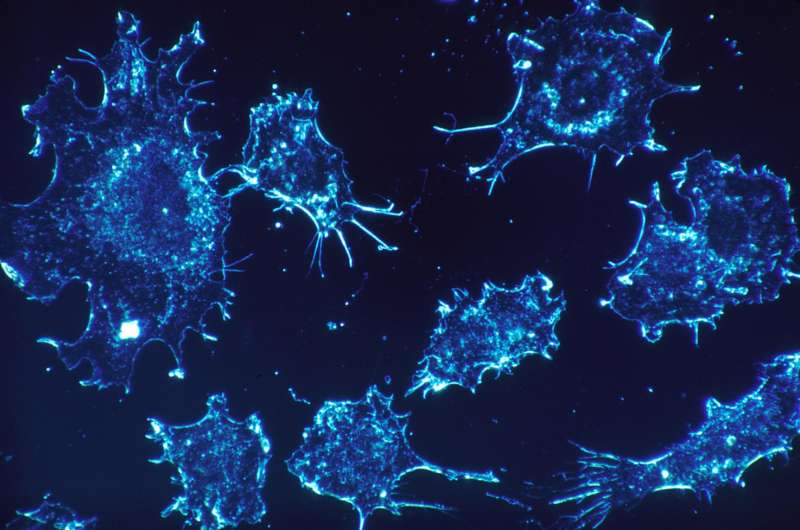Credit: CC0 Public Domain
Massachusetts General Hospital (MGH) investigators have identified a way in which a type of lung cancer co-opts a portion of the immune system to increase tumor progression. In the Dec. 1 issue of Science, the team from the MGH Center for Systems Biology describes a "crosstalk" between lung tumors and bone marrow, which leads to the generation of a type of immune cell that travels to the tumor and promotes its progression.
"Immune cells play critical roles in cancer. For example, we already know that T cells can eliminate tumors and be activated with immunotherapies. Tumors are home to diverse immune cell types, some of which remain much less explored than T cells and could also control cancer progression" says Mikael Pittet, PhD, director of the Cancer Immunology Program in the MGH Center for Systems Biology and senior author of the Science paper. "Myeloid cells are immune cells that are attracting attention because they can infiltrate a broad range of tumors. These cells include neutrophils and macrophages and seem to modulate key cancer-associated activities."
Recent research has suggested that tumor-infiltrating myeloid cells are initially produced in the bone marrow. For the current study the MGH team further explored whether bone marrow activity was altered in the presence of cancer in another part of the body, in this instance lung cancer. Their initial experiments found increased bone activity in two mouse models of a common form of lung cancer and in 70 lung cancer patients, even in absence of bone metastasis. Both the number and activity of osteoblasts - cells that produce and reshape bone tissue - were increased within the bone marrow of mice with lung tumors compared with cancer-free animals; and reducing the number of osteoblasts in mice not only limited neutrophil infiltration of tumors but also interrupted tumor progression.
Examination of tumor-associated neutrophils revealed two populations, which could be distinguished based on the expression of a protein called SiglecF. The accumulation of neutrophils expressing high levels of SiglecF, compared to other neutrophils, depended on the numbers of osteoblasts in the bones. And these SiglecFhigh neutrophils were found to promote cancer infiltration. The cells exhibited many functions associated with tumor progression; their presence within mouse tumors substantially accelerated cancer growth, and in human lung tumors, a SiglecFhigh neutrophil signature was associated with poor patient survival. A search for factors that could carry an activating signal from lung tumors to osteoblasts, inducing the production of SiglecFhigh neutrophils, revealed the molecule called sRAGE. This soluble factor was found at higher levels in the blood of animals with lung tumors, could increase the activation of osteoblasts and contributed to the maturation of neutrophils in cultured cells.
"Our findings indicate the existence of long-distance interactions between lung tumors and bones: lung tumors remotely activate osteoblasts, and those bone cells, in turn, shape immunity by supplying tumors with cancer-promoting neutrophils," says Pittet, who is an associate professor of Radiology at Harvard Medical School. "Since patients with many types of cancer have elevated levels of myeloisd cells in their blood, it's possible that other tumors could have a similar interaction with bone to increase myeloid cell production."
Pittet adds that this study "shows the importance of studying cancer as a systemic disease. Investigating how organs far from tumors contribute to cancer progression should lead us to ways of manipulating those systemic activities in therapy. We have started to study the complexity of myeloid responses to cancer and to identify molecular and cellular components that promote the disease. With the ultimate goal of improving patients' quality of life, we hope that modulating myeloid pathways will overcome some of the limitations of current treatment options."
More information: C. Engblom el al., "Osteoblasts remotely supply lung tumors with cancer-promoting SiglecFhigh neutrophils," Science (2017). science.sciencemag.org/cgi/doi … 1126/science.aal5081
Journal information: Science
Provided by Massachusetts General Hospital





















